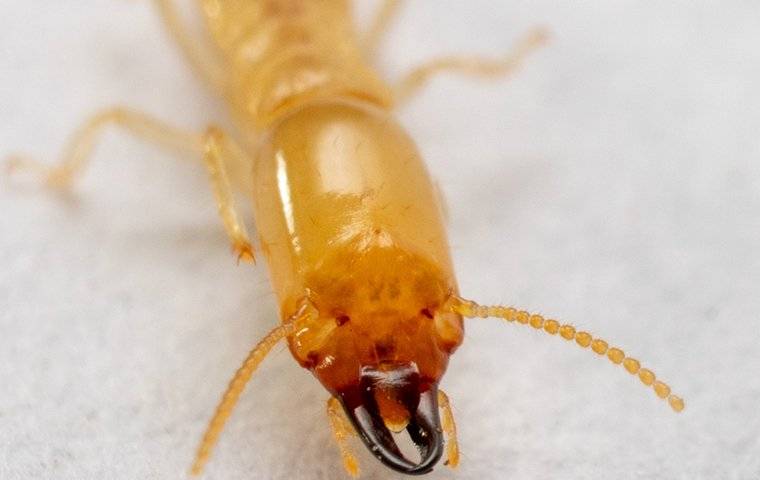

Yuck, Maggots
If you lift a dead branch up and see wiggly little maggots that disappear into the cracks of the decaying wood, you should take a closer look—even though you may not want to. They’re not likely to be maggots. Flies don’t lay their eggs in decaying wood. Those pale-colored, tiny insects are probably subterranean termite workers. Termite workers can be a mere ⅛ of an inch long. That’s really small. Look to see if the tiny, wood-inhabiting creatures you’ve found have legs. Maggots don’t have legs. It is important to be able to identify termites when you see them because they can present a serious threat to your home.
Getting Rid Of The Wood Gets Rid Of The Problem
We hope you don’t believe this. If you find termite workers inside a dead branch or some other rotting wood on your property, you should know that burning that branch or removing that branch from your yard is not going to address your termite problem. Subterranean termites live in the ground. They’re not nesting in that wood.
Termites Are Small Insects, So They Must Be A Small Problem
If you flip a board over and see subterranean termite workers crawling around on the ground, or on the bottom side of the board, you may think that they’re not much to look at. A few dozen ⅛-inch-long insects aren’t likely to cause your eyebrow to lift. But you need to understand that a subterranean termite nest can have a million of those tiny worker insects. If you could see all of the termites in the colony those termites came from, it is likely that you would be horrified.
Termites Are An Isolated Problem
If you have a pile of leaves, sticks, branches, boards, or some other debris in a pile in your yard, you might be tempted to think that, as long as that pile is away from your home, subterranean termites will only target that rotting wood. Here are a few things you should know:
Subterranean termite workers don’t feed on one wood source at a time. They can be feeding on your home while they’re feeding on that pile of decaying leaves and wood in your yard.
Subterranean termite colonies respond to favorable conditions. If you have an abundance of food in your yard, the queen will start producing more workers because her colony is being well fed.
As the number of termites increases in your yard, exterior structures like decks, porches, fences, sheds, and stairs are more likely to be targeted.
If you remove a source of food after a colony has grown to a large size in response to the food source, the colony will be even more motivated to feed on the wood of your home. A starving termite isn’t nearly as picky as a well-fed termite.
A Termite Treatment Doesn't Last Forever
If you have purchased a home that has had termiticide injected into the ground, you might think that your home is protected. This might be true. But it might not be true. Termiticide products wear out over time. If you don’t have appropriate retreatments, your property can become vulnerable to attack.
Termite Damage Prevention
Do you own property in Monmouth County, New Jersey? If so, you’re in our service area. Don’t let your property be damaged by subterranean termites. At the first sign of termite activity (or long before you see signs) contact Alliance Pest Services for industry-leading termite protection. This is protection for your property, your savings account, and your retirement. Reach out to us today for assistance.
Latest Blogs
Stay informed about pests and pest related issues in your area!
Dangerous Spiders Of Columbia, MD
If three different spiders are placed in front of you and you are told to pick up the harmless one to win a million dollars, would you feel confident enough to do it?
The Easiest Way To Get Bats Off Your Monmouth County Property
Do you see an increased amount of bats around your home lately? Learn the best way to get bats off of your property.
Are The Fleas In Monmouth County Causing You Headaches?
Prevent and treat fleas with help from Alliance Pest Services in Monmouth County.
Request Your Free Quote
"*" indicates required fields


